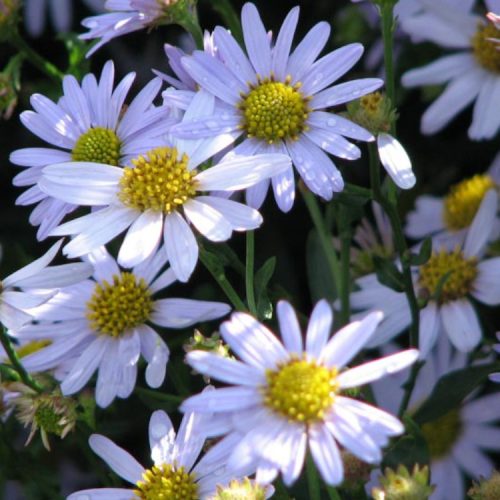Kalimeris
Often overlooked in favour of showier plants, Kalimeris brings a quiet countryside charm to the garden. Bees and butterflies love the daisy-like flowers borne over a mound of rich green leaves. Unlike many asters, Kalimeris is naturally resistant to mildew, so it’s the ideal option for organic gardening without using fungicides. They’re effortless to grow, don’t need staking and look lovely at the front of a sunny border or in containers.
Showing the single result
Showing the single result
Kalimeris, or Japanese Aster, is a small genus comprising eight species from the Asteraceae (sunflower) family with pink, purple, blue and white flowers with yellow centres. First described in 1825, this genus is found mainly in China, Korea and Japan and is also naturalised in Hawaii.
One of the prettiest cultivars is Kalimeris Incisa’ Blue Star’, which blooms with a mass of pale blue, yellow-eyed daisies from early July to late autumn. Kalimeris is brilliant en masse as part of an informal cottage garden or prairie planting scheme. The flowers are also great for cutting, and you can dry them for winter arrangements.
Cultivation
Kalimeris will grow to 50 cm tall in a neat, compact clump that will eventually spread to around 30-45 cm. They’re relatively slow to spread, so you only need to divide them every four or five years if they become overcrowded. You can deadhead them, but it’s not essential, as the flowers simply dry up unobtrusively before another flush appears.
You can grow Kalimeris in any garden soil, in a sunny or partly shaded spot. Once they’re established, they are fully hardy and also fairly tolerant of drought, although they don’t like soils that get too soggy. Thanks to their long flowering season, they’re a valuable plant for attracting insects, and they’re always covered with butterflies, bees and hoverflies.
Like all our bee-friendly perennials, our Kalimeris plants are 100% pesticide-free, so they’re an excellent addition to an organic garden.

